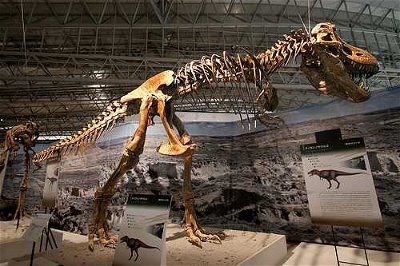23. Dr. Raymond Dart, a professor of anatomy at the University of Witwatersrand in Johannesburg, South Africa, identified the first australopithecine in 1924. What kind was it?
From Quiz A Brief History of Australopithecines
Answer:
Australopithecus africanus
Dart discovered a skull which he called Australopithecus africanus, which means "southern ape-man from Africa". He found this skull in a crate of fossil-bearing rock from a lime quarry in Taung, in what was then Bechuanaland, and is now Botswana. The skull was very small, and Dart called it the Taung Child.
Dart's discovery was not taken seriously for 23 years. Scientists believed it was the skull of an ape. Finally, in 1947, similar fossils were found in Sterkfontein, South Africa, and brought credence to Dart's find; and in 1950, eminent scientist Wilfrid Le Gros Clark cleared Dart's name forever in a scientific journal.
The Taung Baby was probably about six years old when it died.
 Dinosaurs roamed the earth millions of years ago and we will take a journey back in time to look at some of the most common.
Dinosaurs roamed the earth millions of years ago and we will take a journey back in time to look at some of the most common.  Dinosaurs roamed the earth millions of years ago and we will take a journey back in time to look at some of the most common.
Dinosaurs roamed the earth millions of years ago and we will take a journey back in time to look at some of the most common.  Quick Question
Quick Question = Top 5% Rated Quiz,
= Top 5% Rated Quiz,
 Top 10% Rated Quiz,
Top 10% Rated Quiz,
 Top 20% Rated Quiz,
Top 20% Rated Quiz,
 A Well Rated Quiz
A Well Rated Quiz